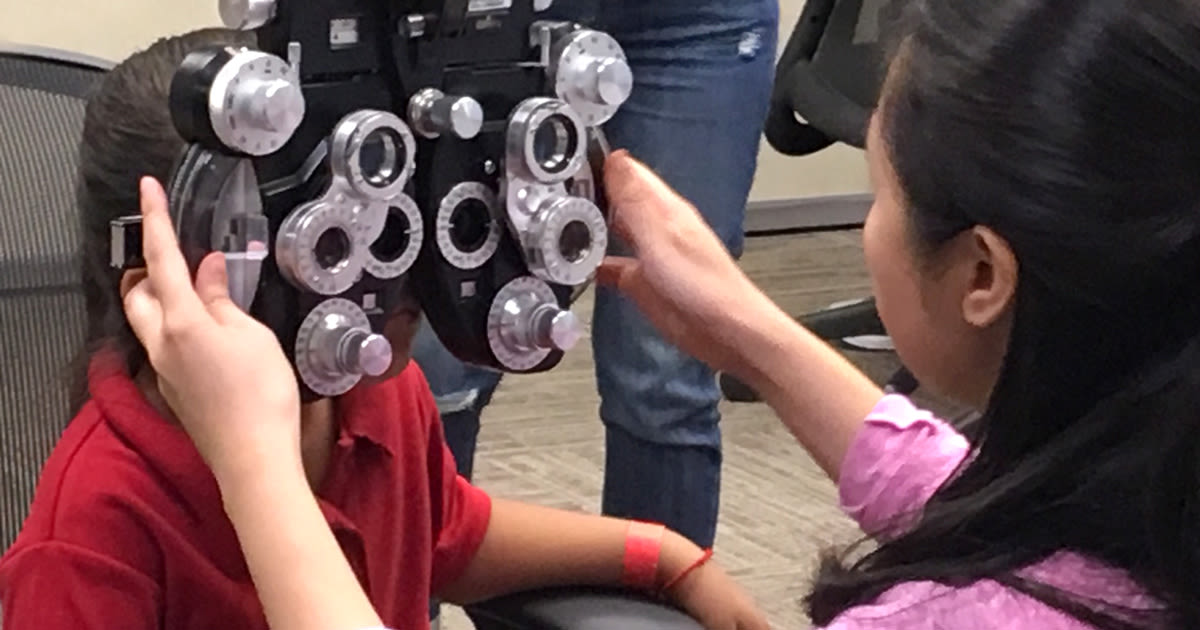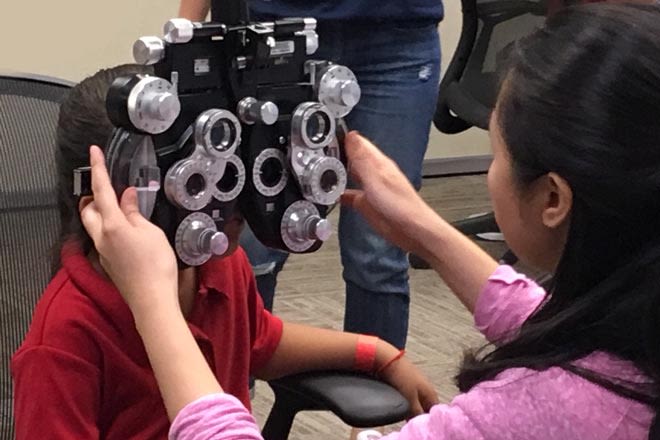World Sight Day: What it is and why it’s important

What is World Sight Day?
World Sight Day is an annual event aimed at raising global awareness about vision impairment and blindness. It’s coordinated by The International Agency for the Prevention of Blindness (IAPB) and is observed on the second Thursday of every October.
According to the World Health Organization, an estimated 2.2 billion people around the world are unable to see clearly. Of these people, around one billion have preventable or untreated vision problems.

World Sight Day 2024 falls on October 10.
You can make a difference during World Sight Day (and throughout the year) by contributing to organizations dedicated to eradicating global vision impairment and blindness. Your support can improve the vision of people in your community and around the world.
History of World Sight Day
The first World Sight Day took place on October 12, 2000. In addition to raising awareness, the IAPB created this event to encourage people around the world to seek eye care. They also advocate for decision-makers to place a greater emphasis on eye health.
Today, the IAPB, in collaboration with nearly 200 IAPB member organizations worldwide, continues to coordinate this important event.
Why World Sight Day is important
Globally, vision problems and blindness are often the result of various conditions. Many of these are treatable if caught early. Raising awareness of these issues is key to improving sight for people around the world.
The top causes of vision loss and blindness worldwide include:
Myopia (nearsightedness) – Distant vision is blurry while near vision is clear.
Hyperopia (farsightedness) – Near vision is blurry while distant vision is clear.
Cataracts – The natural crystalline lens inside the eye becomes cloudy, which can affect vision.
Diabetic retinopathy – This diabetes-related eye problem changes retinal blood vessels. It can cause damage and lead to vision loss.
Glaucoma – Often caused by fluid buildup in the eye, glaucoma damages the optic nerve. It can lead to vision loss and blindness without timely treatment.
Age-related macular degeneration (AMD) – AMD affects the macula (the center of the retina) and can result in central vision loss.
Uncorrected vision impairment and blindness can have a significant impact on individuals and communities. For adults, this can contribute to:
Difficulty finding and keeping a job.
An increased risk of depression and anxiety.
Mobility issues, especially among older adults, who are at a higher risk for falling and fractures.
Social isolation.
For children, uncorrected vision issues can hinder learning and development in the following ways:
Young kids with severe vision impairment may be slower to develop motor, social, emotional and cognitive skills.
School-age children may not perform as well in school as their peers.
How to get involved
Organizations across the globe aim to help people see clearly on World Sight Day and year-round. Some of these organizations include:
OneSight EssilorLuxottica Foundation
The OneSight EssilorLuxottica Foundation believes everyone deserves good vision. Its goal is to help eliminate uncorrected poor vision within one generation by focusing on four main areas:

About 400 North Texas schoolchildren received eye exams through the Essilor Vision Foundation last Thursday. The kids will receive their free eyeglasses on World Sight Day.
Creating sustainable access to vision care – The Foundation trains people to provide vision care, supports them to set up their own optical shops and provides mobile services in their communities. It also builds permanent vision centers near hospitals and clinics.
Providing free eye exams and glasses for people with the most need – The organization improves lives through better vision with access to free services.
Funding local vision care programs – The Foundation invests in innovation to make sustainable vision care services and products affordable.
Raising awareness – The organization advocates to ensure vision care gets the attention it deserves among decision-makers and in local communities.
How you can make a difference
Each year, the OneSight EssilorLuxottica Foundation has World Sight Day activities across the globe that help expand vision care access and raise awareness of its importance. You can help by participating in fundraisers or volunteer events.
Optometry Giving Sight
Optometry Giving Sight coordinates the World Sight Day Challenge. This is a major international fundraising event that brings the global optometric community together to help end avoidable blindness and vision impairment.
How you can make a difference
Donate or participate in fundraising activities. Your support can have an immediate and lasting impact.
Lions Clubs International Foundation
World Sight Day traces its start to the Lions Clubs International Foundation's Sight First campaign in 2000. Vision remains one of the Lions' five global service areas.
How you can make a difference
With the Lions Recycle for Sight program, you can donate your usable eyewear at Lions-sponsored collection boxes in your community. Lions, Leos and other volunteers collect used eyeglasses and deliver them to regional Lions Eyeglass Recycling Centers. For information specific to locations in your community, contact your local Lions Club.
Orbis International
Known for its Flying Eye Hospital, Orbis International has been treating and preventing blindness for more than 35 years. Since 1982, they have conducted training programs in over 92 countries and trained hundreds of thousands of medical professionals.
How you can make a difference
You can celebrate someone special in your life by dedicating a gift to Orbis in their name. Recipients will be notified of your gift by receiving a hand-addressed Orbis acknowledgment card in the mail.
If you’re interested in supporting World Sight Day, start by prioritizing your own vision. Schedule an appointment with your eye doctor today. You can also reach out to local vision organizations to inquire about donations, volunteer opportunities, or both.
Blindness and vision impairment. World Health Organization. August 2023.
Refractive errors. National Eye Institute. November 2023.
What are cataracts? EyeSmart. American Academy of Ophthalmology. October 2023.
Diabetic retinopathy: Causes, Symptoms, Treatment. EyeSmart. American Academy of Ophthalmology. November 2023.
Glaucoma. Cleveland Clinic. November 2022.
Age-related macular degeneration (AMD). Johns Hopkins Medicine. Accessed September 2024.
Page published on Wednesday, February 27, 2019
Page updated on Tuesday, October 1, 2024






